In today’s digital fundraising landscape, it’s hard for nonprofit leaders to produce tangible results because everything has changed and continues to change.
The way donors give has shifted, social media has become spend-based, and the skill sets of successful fundraisers has changed.
The Digital Fundraising Summit covered how to acquire new skills, processes and technology so that you can raise more funds with less wasted effort. If you missed attending the Summit, no problem! These insights will help!
This is the third post in a three-part series where we cover the top insights learned from the Digital Fundraising Summit, including how to master the art of nonprofit storytelling, producing effective Facebook ads on a $100 budget, the online fundraising compliances concerns you need to know and cultivating new donors through email.
And if you’re interested in purchasing the notes and recordings to download yourself, we can help you with that too.
Master the Art & Science of Nonprofit Storytelling – Rain Bennett, Six Second Stories
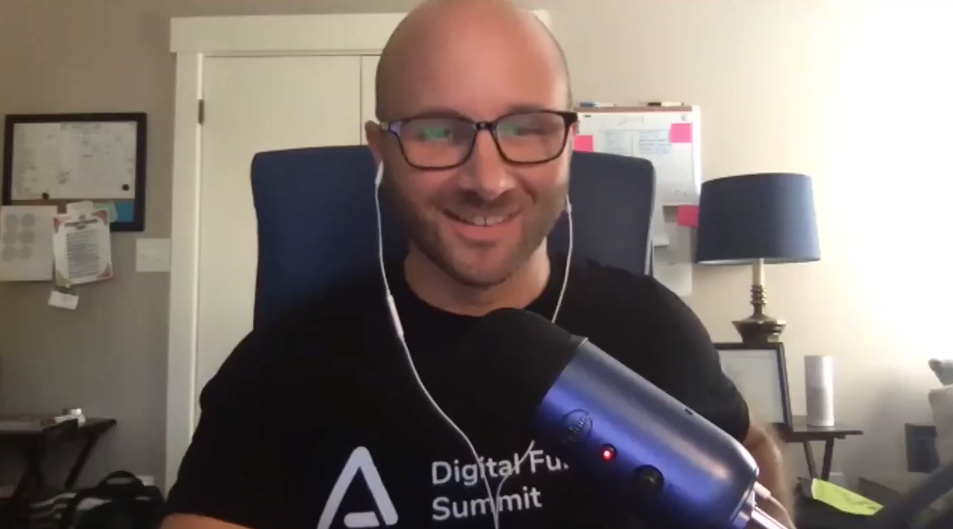
For nonprofit leaders, storytelling is a way to deliver information about your mission and organization through emotion. If you use videos to talk about statistics or the organization without touching people in their hearts, Rain Bennett with Six Second Stories says you’re doing it wrong.
In this session, he stresses the importance of creating videos that entertain, inspire or educate. There’s a ton of competition and with nonprofit storytelling, people have to have an interest in watching. Here’s how organizations can move from inaction and option overload to taking the first steps to get started.
1) Your organization can tell an all-encompassing story by thinking about breaking stories up within each program and the clear differences between what makes a story vs. a speech or message. Stories are about change and overcoming obstacles, show your audience how your organization can help them do that.
2) Think about the people you serve and remember that the stories should always be about them. Effective stories are the ones told through empathy, by putting yourself into the minds of the people you’re serving.
3) Your organization can use the storytelling map to determine who is the heart of your story, why is the story being told, what is the character’s conflict and where does the story live in the world?
4) Create an effective story arc by including these components: start, establish a routine, trigger, conflict, crisis, climax, falling action, resolution and the end.
5) Use these types of stories in your communication: success story, mission story, origin story and a behind the scenes story.
6) Meet your people where they’re at and consider doing stories on these platforms: Facebook groups or FB live, Instagram stories or long-form videos, short Snapchat videos, LinkedIn, YouTube, email lists and your website.
7) Take a chance and get started with storytelling by planning what you’re going to do, master the basics, get very specific with your goals and objectives, use the tools you already have and shoot for empathy which helps drive your audience to action.
How to #Win on a $100/Month FB Advertising Budget – Alison Glazer, Whole Whale
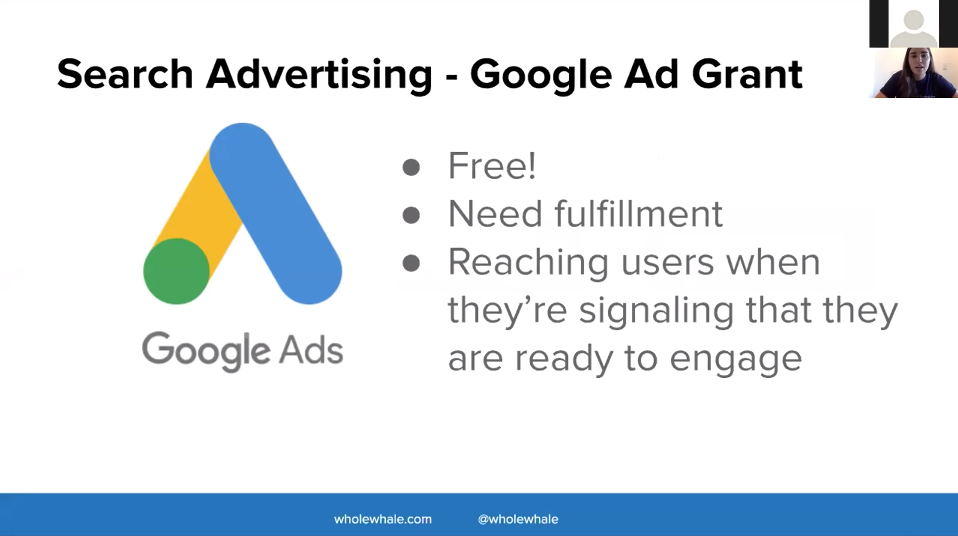
This extremely useful and valuable session by Alison Glazer from Whole Whale on Facebook advertising makes the case for why organizations should consider digital advertising as a low-cost and highly targeted way to reach your audience.
You can grow or re-engage your audience on a limited budget either through targeted ads, using the Google ad grant or a combination of both. Here’s what else you’ll learn:
8) How you can use YouTube as a valuable tool for video storytelling with 30 second ads starting at less than 10 cents.
9) Determine your goals and campaign objectives, including what you want to get from the ads and how to select targeting for key audiences.
10) Use the commitment curve to determine the types of ads you want to run, how much to spend and the people that are at each stage of the curve. For example, if your goal is to engage people with “likes,” you’ll pay $0.48/click whereas you’ll pay $65 for an actual donation. If you’re going to ask for a heavier lift, you’ll pay more in advertising.
11) Consider using ads for conversions and fundraising as that’s where you’ll see the best value for what you spend. You optimize the ads for the end goal and get the people to do what you’d like them to do, for example, signing up for your newsletter list or making a donation.
12) You can also use audience targeting to drill down to very specific groups of people, like through education, age, location, gender, workplace, behaviors, relationship status, likes and interests. There are also options for detailed behavioral targeting that will filter people out based on how they behave online or what they search for.
13) How to create the most effective ads that accomplish your goals, including a landing page to drive people to, an effective headline, and a clear call to action (CTA).
14) How to use Facebook Insights and Google Analytics to monitor the aspects of the ads that are working and make tweaks accordingly so that your ads convey that your mission solves a specific problem for your audience.
Online Fundraising Compliance – Sharon Cody, Harbor Compliance
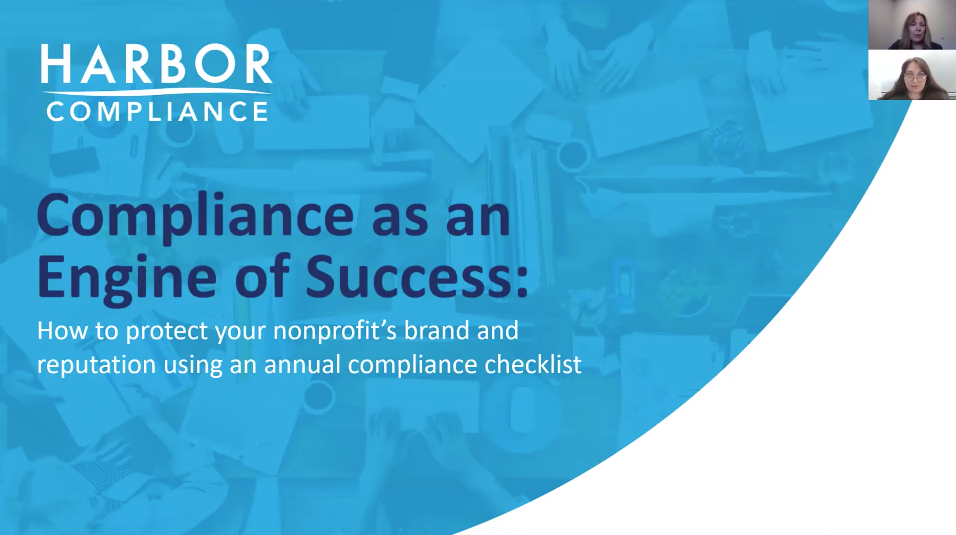
This session by Sharon Cody with Harbor Compliance touches on how important online fundraising compliance is for nonprofits because it safeguards reputation and brand, protects the leadership and board, and encourages individual donations, among other reasons.
Sharon leads viewers through charitable solicitation registration and what rules will determine whether your nonprofit needs to comply as well as the ramifications for nonprofits who don’t follow the rules. She also touches on these additional points:
15) The different types of fundraising that may prompt additional changes to your regular obligations, including applying for grants, radio and TV ads, collecting membership dues, auctions, bingos, raffles, games, and professional solicitors.
16) The compliance registration for solicitation is a multi-step process that includes an application, paperwork and then once you’re registered you’ll have to submit regular financial reporting.
17) Because the process can be burdensome for small nonprofits, Sharon walks through two practical approaches, which is to register or file an exemption in all 41 states OR choose to not accept online donations in states where you aren’t registered.
18) How to discuss compliance within your organization by looking for allies on staff and the board who can champion compliance causes and having an appropriate time for the discussion.
19) Consider nationwide charitable solicitation registration as a growth strategy – an opportunity to fundraise in different ways, fundraise with more organizations, get partnerships with larger foundations or corporate sponsors that are more careful about investigating who they will take on as a partner. Increase fundraising and therefore impact.
20) Discuss outsourcing to keep your nonprofit efficient and focused on mission and impact. Outsource to law firms, financials to CPA firms, they don’t do it in house because it requires specialized knowledge and willing to make the investment into having professionals do this type of research, applications, renewals, etc.
Donor Cultivation: Using Email To Turn New Donors Into Lifelong Contributors – Bradley Martin, Kindful
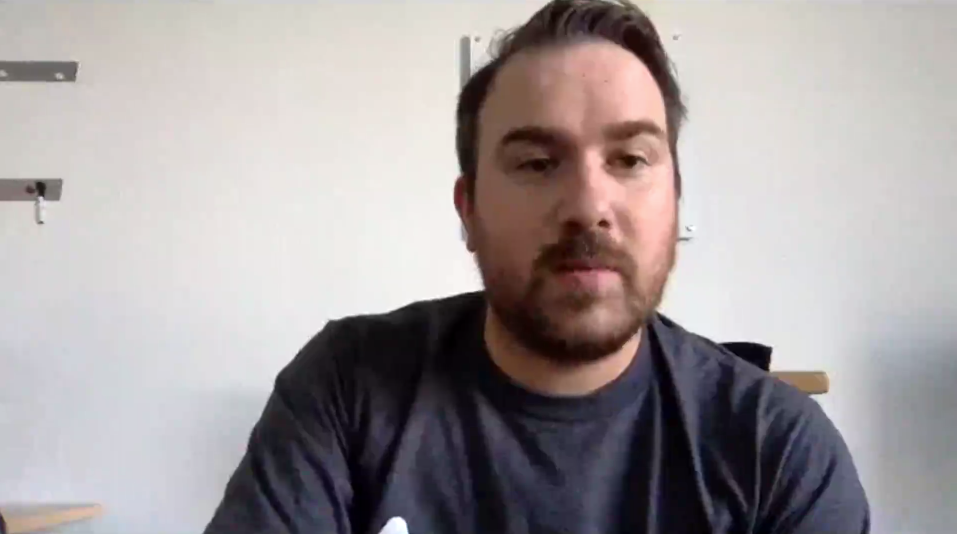
Bradley Martin with Kindful shared seven key findings based on brand new data found with Next After group on why cultivating, or using email to turn people into lifelong contributors, really matters.
Bradley educates viewers on what cultivation means: when you send people more information, giving something of value so they understand how their donation works, or more information about your mission and you don’t ask for money in return. And then he talks through why this approach is so important for nonprofit organizations to consider. These are the key findings:
21) A person giving online only brings in about $148/person, but when you add sending that person an email, it jumps to $301/person as the average donation. Plus, that person is 29% more likely to give again next year simply by sending regular emails.
22) One organization experimented by increasing email cultivation, they sent one email a week and analyzed the results for 90 days. They found that their existing donors increased engagement by 42%, lapsed donors increased by 72% and non-donors jumped up 109% with engagement. The cultivation method increased donor giving and acquiring new donors.
23) The rest of the findings are things you can implement into your organization right now: make your email sign-up form and donation page easy to find and fill out, have one clear call to action, have an automated welcome series for people who sign up and acknowledge a donation via email or phone, give people a logical next step like making a donation, experiment with when emails are sent, write copy that sounds like it’s coming from a real, authentic person and consider sending a survey so you can learn more about your donors and talk specifically to them.
Closing Remarks – CauseVox
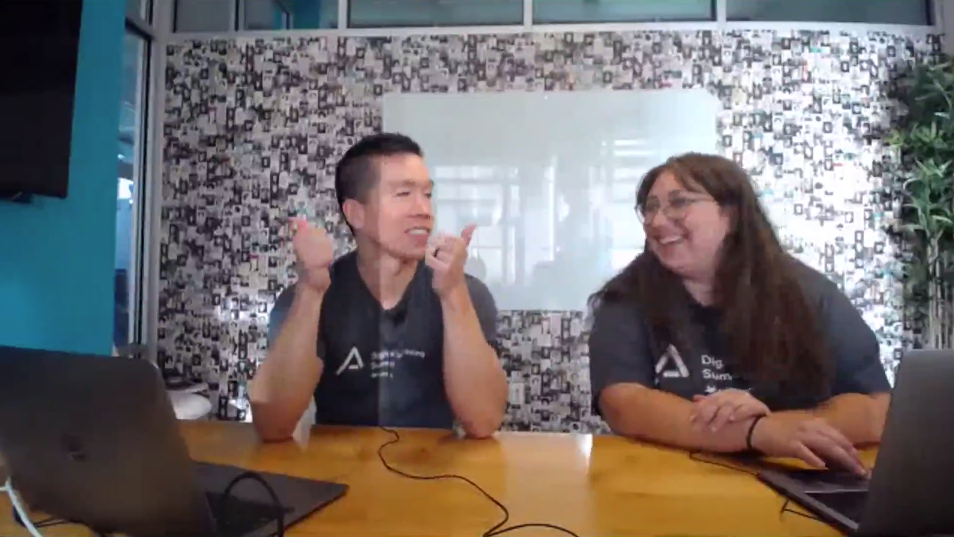
Rob Wu and Candace Cody from CauseVox closed out the Digital Fundraising Summit by giving an overview of the platform and reminding attendees:
24) You can create donation pages, peer-to-peer fundraising, and crowdfunding that convert more donors with CauseVox.
25) When you tidy up your digital fundraising using a platform that isn’t clunky, complex or bound by contracts, your donors will have a good experience, and it’ll be easier for your to manage your fundraising.
26) CauseVox helps you raise more money with less clutter, frustration and wasted effort so you have more time to invest in donors.
Learn Even More Insights With Notes and Recordings of Each Session
Did you miss attending the Digital Fundraising Summit in person? Want access to the full sessions and notes? If you’d like to go even deeper into the content and sessions from the Digital Fundraising Summit, you can purchase the notes and recordings.
You’ll get over eight hours of exclusive, expert content from 13+ sessions through video recordings and written notes (33 pages) that you can download and immediately apply to your own organization. To purchase the notes and recordings go here.




